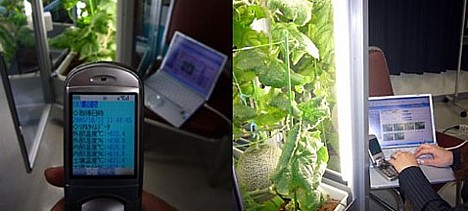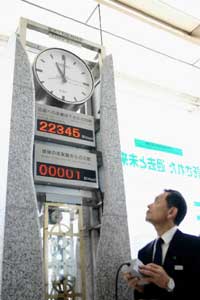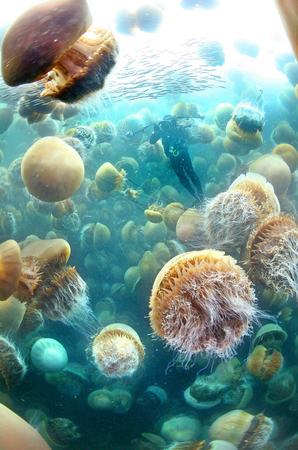
On October 11, Matsushita Electric Works, Ltd. (Panasonic's parent company) announced plans to begin selling an indoor gardening system whose lighting, temperature and water supply can be remotely monitored and controlled via the Internet. The system, called Aiterrarium, is slated for release on December 20 and will initially target research facilities for universities and businesses.
The system consists of a growing chamber that is 50 centimeters wide and 1.2 meters tall. The chamber is outfitted with 190 watts of fluorescent lighting on the walls and ceiling, and sensors measure 15 different growing conditions, including soil temperature and moisture level. If a heater and automatic watering system are added, users can connect to a Matsushita server over the Internet to set ideal temperatures and perform watering. A webcam allows users to monitor growing conditions from anywhere in the world via cellphone or computer.
The system was exhibited at the 2005 World Expo (which may explain the "Ai" in "Aiterrarium," since Aichi prefecture played host to the Expo), where it received a favorable response, prompting Matsushita to make improvements and begin test marketing it to research facilities.
The standard system will cost 360,000 yen (US$3,000) plus monthly server fees, while the fully-optioned model will run 600,000 yen (US$5,000). The company is aiming for sales of 600 units in 2007.
In an effort to expand its business in the market for automated agricultural systems, Matsushita is developing remote-control systems for greenhouses, which they aim to release in April 2007.
[Source: Fuji Sankei]

 The Hiroshima Peace Memorial Museum's
The Hiroshima Peace Memorial Museum's  This crazy photo from the Yomiuri Shimbun shows a diver swimming amongst a swarm of giant jellyfish. These giant sea blobs, known as Echizen kurage (
This crazy photo from the Yomiuri Shimbun shows a diver swimming amongst a swarm of giant jellyfish. These giant sea blobs, known as Echizen kurage (
